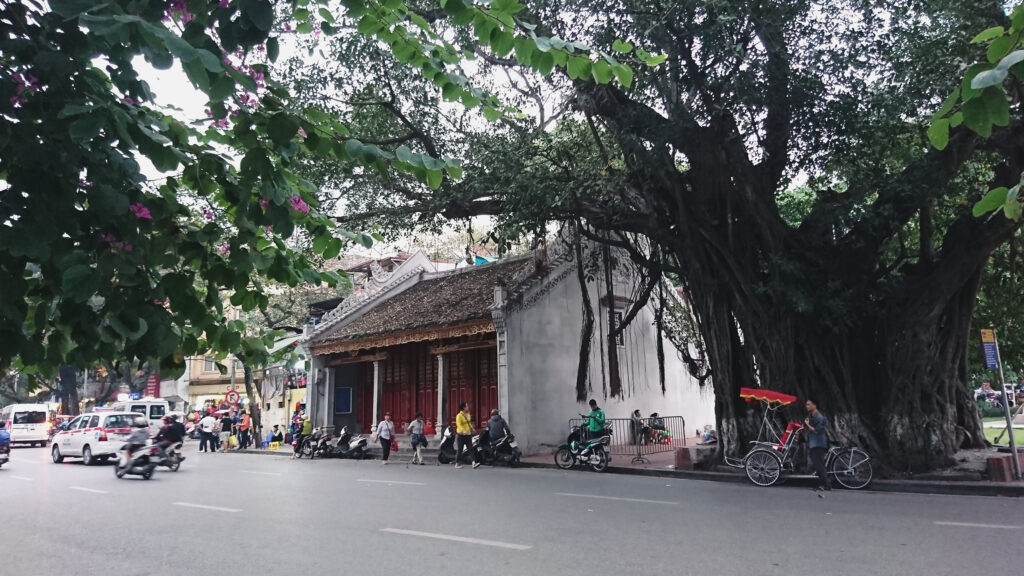[S01.2] Non-religious Spiritual space for social cohesion in Vietnam

1.3 Vietnam after 1975
After the collapse of R.V.N in the spring of 1975, the whole country was reunified with the establishment of the Socialist Republic of Vietnam (S.R.V) and the capital was placed in Hanoi. However, the process of emerging two antagonistic regimes did not run smoothly, particularly in the condition of an exhausted economy. Given the strict socialist approach in terms of economy and society, the implementation of nationalization industry and agricultural collectivization could not improve but exacerbate the situation. Under the influence of Marxism, class differentiation was considered as the main cause of polarization. Subsequently, all of the material and spiritual needs of individuals were discouraged and pared down to the minimum with the same degree for everyone while the government took full control of all production activities and in every aspect of the personal life. As with a little contact with the outside world, the amenities and entertainment of people were limited to occasional art events under the tutelage of the state.
In the realm of spiritual life, while Marxism and Communism were propagated as a mainstream ideology, traditional customs and spiritual practice was criticised as “feudal remains” or “superstitious”. The materialism as one of the tenets of communism was harnessed as a legitimate excuse to strictly monitor religious activities in the public sphere (Bouquet 2010). Under the centralized control of the government, the national history in more than four thousand years is deliberately shortened and remarked by the establishment of the Vietnamese Communist Party. The interpretation of Vietnamese national history has been subjectively reshaped and oversimplified as a tradition of fighting against foreign invaders while cultural and moral values were subsided to be a secondary concern. In other words, education was regarded as a useful means to equate the benefit of government and nation: patriotism and martyrdom were disseminated for the sake of the Party, the volume of individual griefs and personal emotions were turned down in order to emphasize the national goals. In this spirit, museums and memorials were designed to promote a heroic but monochrome image of the country to the entire world (Templer 1999). Therefore, they became unfamiliar with the locals but interesting to curious tourists.
Facing the reality that the country was sliding into the depths of a recession, in 1986, a political and economic reform named Renovation (Doi Moi) was launched in an attempt to increase the national production via opening markets to free trade but still remained the protagonist role of the state in politics. Although this transition had opened some doors for the Vietnamese to the outside world, the abrupt break down of social and economic barriers in a society that had been tightly controlled for thousand years caused underlying disconnections among the community. More than 50 per cent of the Vietnamese population was born after 1975 due to the significant increase in the fertility rate (Templer 1999). The young people for the first time experienced the feeling of disintegration with their parents’ generation- the generation of war who had very limited knowledge of the entire world.
Yet the intrusion of popular culture from the Western countries raised the bewilderment and then the anxieties among the young people as it highlighted the injustices and the contradictions in their country. The ignorance of their own history was taken as a form of protest to express their impuissance and disappointment with the reality (Marr 1984). Hence the cultural identity has become a vague and exotic notion for the youngsters and traditional values have been somehow equated with the main cause of social conflicts.
Reference:
Bouquet, M. (2010) ‘Vietnamese party-state and religious pluralism since 1986: Building the fatherland?’, Journal of Social Issues in Southeast Asia, 25(1), 90.
Marr, D. G. (1984) Vietnamese tradition on trait, 1920-1945, London: University of California Press
McLeod, M. W. (2001) Culture and customs of Vietnam, Westport, Conn. ; London: Westport, Conn. ; London: Greenwood Press.
Nisbett, R. E. (2003) The geography of thought: how Asians and Westerners think differently… and why, London: Nicholas Brealey.
Templer, R. (1999) Shadows and wind: A view of modern Vietnam, New York: The Penguin Group.
